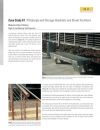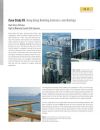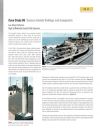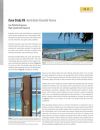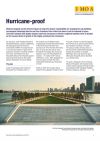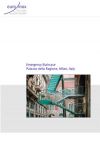Safety is the first consideration when designing handrails, walkways, platforms and stairs. They should also require little or no maintenance, and when the application is not industrial, be aesthetically pleasing. Stainless steel has always been a popular choice because it provides high strength, design flexibility, durability and wear resistance, which is essential for slip-resistant surfaces and structural integrity.
If the correct stainless steel is specified, coatings can be eliminated, avoiding expensive maintenance. This is critical in industrial applications where coating failure can be a source of contamination, such as in the food, beverage and pharmaceutical industries or where the environment is particularly corrosive such as in water treatment, wood pulp and chemical plants. Exterior applications are also presenting more challenges as the world’s population is increasingly concentrated in coastal zones, rising sea levels are causing more storm surge flooding, and the use of deicing salt is growing.
Advice on specification of common tubular handrail finishes can be obtained in The Construction Specifier article Get a Grip on Stainless Railing Finishes. Specialized finishes are discussed on IMOA’s website.

Type 316 industrial stairs (left photo credit TMR Stainless), Australian coastal swim club stairs (center photo credit Paige Stainless Fabrications) and Japanese subway railing (right photo credit JSSA).
Higher alloyed stainless steels like Type 316 and the even more corrosion- resistant duplex stainless steel 2205 are becoming increasingly common. Fabrication advice for austenitic (i.e. 304/304L, 316/316L, etc.) and duplex (i.e. 2304, 2205, etc.) grades is available for suppliers who are unfamiliar with them.
IMOA’s Site and Design Evaluation System was developed to help decision makers in selecting the correct stainless steel, and there are five case studies related to this topic illustrating use of the system in evaluating real projects around the world.



